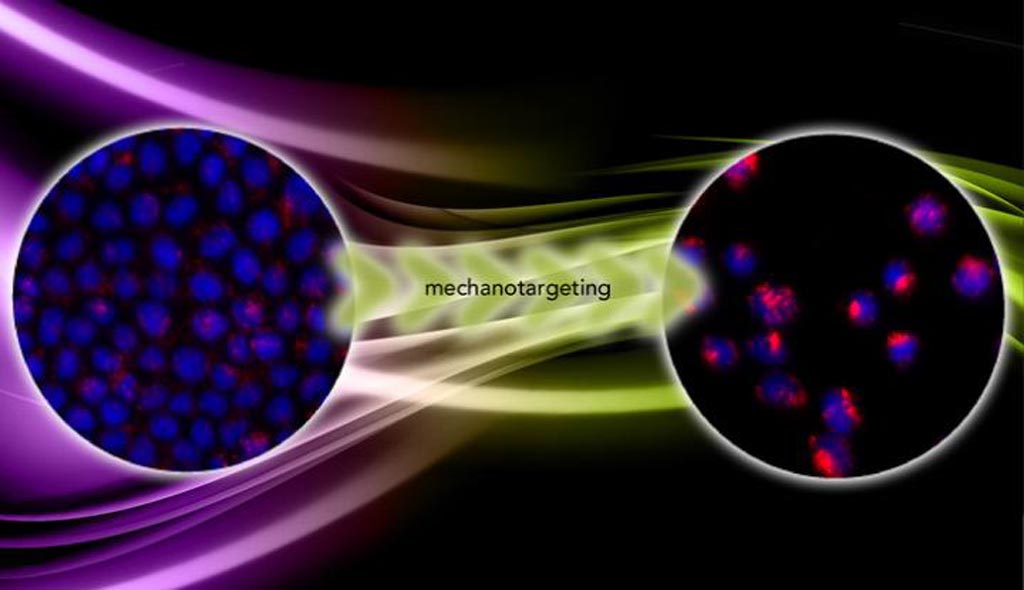Novel Method Designed to Destroy Only Malignant Cells
By LabMedica International staff writers
Posted on 24 Jun 2018
A novel system for targeted release of drugs to kill malignant cancer cells depends on the shape and mechanical properties of the cells rather than the presence of specific biomarker molecules.Posted on 24 Jun 2018
Targeted delivery of nanoparticle (NP)‐based diagnostic and therapeutic agents to malignant cells and tissues has exclusively relied on identifying specific biomarkers in a process called chemotargeting, in which NPs are surface‐coated with ligands that specifically bind to overexpressed receptors on malignant cells.

Image: In the transition from benign to malignant, cancer cells transition from stiff to soft. Mechanotargeting harnesses mechanics to improve targeting efficiency of nanoparticle-based therapeutic agents (Photo courtesy of the Zhang Laboratory, Pennsylvania State University).
In a new approach, a team of bioengineers at Pennsylvania State University (State College, USA) demonstrated that cellular uptake of NPs can also be biased to malignant cells based on the differential mechanical states of cells, enabling mechanotargeting.
In a series of experiments described in the May 23, 2018, online edition of the journal Advanced Materials, the investigators grew cancer cells on hydrogels of variable stiffness. They found that on soft hydrogels the cells remained cohesive and benign and experienced a nearly constant stress that limited the uptake of nanoparticles. In contrast, on stiff hydrogels the cells became metastatic and adopted a three-dimensional shape, offering more surface area for nanoparticles to adhere, and became less stressed. Under this condition, the cells took up five times the number of nanoparticles as the benign cells.
"These two targeting strategies are complementary; you can combine chemotargeting and mechanotargeting to achieve the full potential of nanoparticle-based diagnostic and therapeutic agents," said senior author Dr. Sulin Zhang, professor of engineering science and mechanics at Pennsylvania State University. "The fact is that targeting efficiency requires a delicate balance between driving and resistive forces. For instance, if there are too many keys on the nanoparticle surface, even though these keys only weakly interact with the nonmatching locks on normal cells, these weak, off-target interactions may still provide enough adhesion energy for the nanoparticles to penetrate the cell membrane and kill the healthy cells."
"The nanoparticles are fluorescent, so we count the number of nanoparticles that get into the cell by the fluorescence intensity. We found that in the malignant cells the intensity is five times higher," said Dr. Zhang. "That proves that mechanotargeting works."
Related Links:
Pennsylvania State University













